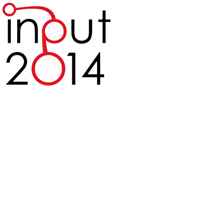Planning Un-Sustainable Development of Mezzogiorno. Methods and Strategies for Planning Human Sustainable Development
Abstract
Growing like “wildfire”, traffic congestion, the spread of pollution, the inefficiency of the services, the chaotic mix of land uses, lack of green are some of the features, unfortunately now become familiar in cities across the world. This is an interesting time for both examine the tools available to urban planners expression of for the analysis and definition of policies both to see how they have adapted to the new conditions. A betterenvironment and qualitylandscapes are necessary conditions for attractinginvestments, assets and people. But they are not sufficient. It shouldalsobe a social and humanlandscapequality to trigger local development. For example, consider the network of "slow city". It was founded as a cultural and proposal of new lifestyle. But that possesses significant practical implications in terms of more balanced regional development, because polycentric. The same report city / country is improved by slow development of these practices. They are able to reduce the depopulation and activities to the centers of larger size, reducing costs (congestion, agglomeration, overuse of resources) both in the areas of concentration in the internal ones (better use of resources, maintenance / control of the territory, etc.).Downloads
References
Droege, P. (2006), The Renevable City, Chirchester,Wiley and Sons.
Florida, R. (2005), City and Creative Class, New York, Rountledge.
Franke, S., Cerhagen, E. (2005),Creativity and the City, Rotterdam, NAiPublishers.
Zeleny, M. (2006), Human System Management, Amsterdam: IOS.

Copyright (c) 2014 Tema. Journal of Land Use, Mobility and Environment

This work is licensed under a Creative Commons Attribution 4.0 International License.
Authors who publish in this journal agree to the following:
1. Authors retain the rights to their work and give in to the journal the right of first publication of the work simultaneously licensed under a Creative Commons License - Attribution that allows others to share the work indicating the authorship and the initial publication in this journal.
2. Authors can adhere to other agreements of non-exclusive license for the distribution of the published version of the work (ex. To deposit it in an institutional repository or to publish it in a monography), provided to indicate that the document was first published in this journal.
3. Authors can distribute their work online (ex. In institutional repositories or in their website) prior to and during the submission process, as it can lead to productive exchanges and it can increase the quotations of the published work (See The Effect of Open Access)
